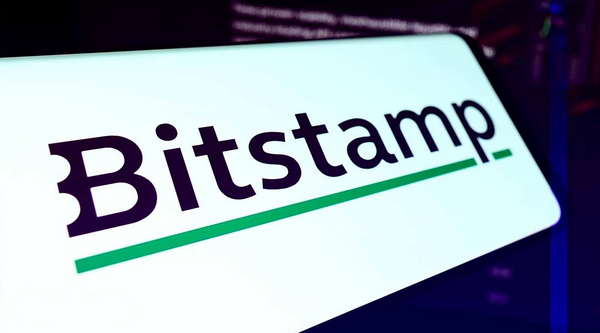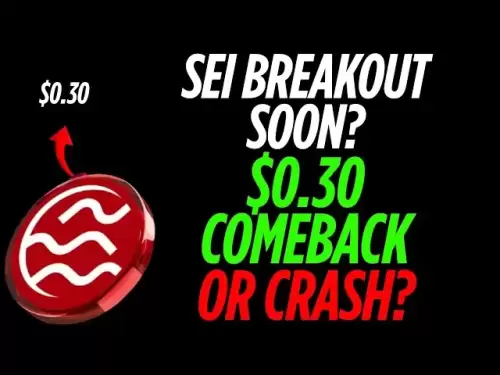-
 Bitcoin
Bitcoin $109,583.2239
0.19% -
 Ethereum
Ethereum $2,583.4612
0.48% -
 Tether USDt
Tether USDt $1.0003
-0.04% -
 XRP
XRP $2.2681
0.70% -
 BNB
BNB $659.9218
-0.52% -
 Solana
Solana $151.4961
-0.37% -
 USDC
USDC $0.9999
-0.02% -
 TRON
TRON $0.2861
1.20% -
 Dogecoin
Dogecoin $0.1718
0.04% -
 Cardano
Cardano $0.5960
-0.07% -
 Hyperliquid
Hyperliquid $40.1233
2.85% -
 Sui
Sui $2.9974
2.48% -
 Bitcoin Cash
Bitcoin Cash $497.1279
-1.76% -
 Chainlink
Chainlink $13.7275
-0.22% -
 UNUS SED LEO
UNUS SED LEO $9.0241
0.70% -
 Avalanche
Avalanche $18.5536
-0.88% -
 Stellar
Stellar $0.2421
1.39% -
 Toncoin
Toncoin $2.8593
-0.51% -
 Shiba Inu
Shiba Inu $0.0...01187
-0.07% -
 Litecoin
Litecoin $90.0023
2.90% -
 Hedera
Hedera $0.1590
2.79% -
 Monero
Monero $322.1495
0.00% -
 Polkadot
Polkadot $3.5453
-1.00% -
 Dai
Dai $1.0000
-0.01% -
 Bitget Token
Bitget Token $4.5733
-1.06% -
 Ethena USDe
Ethena USDe $1.0002
-0.01% -
 Uniswap
Uniswap $7.6345
3.03% -
 Aave
Aave $279.2583
0.47% -
 Pepe
Pepe $0.0...01003
-1.52% -
 Pi
Pi $0.4941
-0.32%
Bitstamp leverage trading process
Leverage trading on Bitstamp requires rigorous eligibility checks, including account verification, trading experience assessment, and approval, emphasizing the importance of responsible and knowledgeable participation.
Nov 18, 2024 at 07:08 pm

Bitstamp Leverage Trading Process
Leverage trading, a sophisticated financial strategy that amplifies both potential profits and risks, has gained significant traction within the cryptocurrency landscape. Bitstamp, a long-standing and reputable cryptocurrency exchange, offers leverage trading services to qualified users. This comprehensive guide delves into the intricacies of leverage trading on Bitstamp, providing a step-by-step walkthrough of the process, highlighting key considerations, and emphasizing risk management principles.
Eligibility and Requirements
- Account Verification: Leverage trading on Bitstamp is only accessible to fully verified accounts. The verification process requires the submission of personal identification documents, such as a passport or government-issued ID, along with proof of residency. This step ensures compliance with anti-money laundering (AML) and know-your-customer (KYC) regulations.
- Trading Experience Assessment: Bitstamp conducts a mandatory trading experience assessment to evaluate the suitability of applicants for leverage trading. This assessment gauges the user's understanding of financial markets, risk management strategies, and leverage trading principles. Successful completion of the assessment demonstrates the necessary knowledge and competence.
- Approval: Upon successful verification and assessment, Bitstamp grants approval for leverage trading. However, the exchange reserves the right to deny or revoke leverage trading privileges based on individual circumstances, such as insufficient trading history or perceived risk factors.
Leverage Levels and Margin Requirements
- Leverage Ratios: Bitstamp offers varying leverage ratios based on the traded asset and market conditions. These ratios typically range from 2:1 to 5:1, allowing traders to control positions with multiples of their account balance. Higher leverage ratios magnify both profits and losses, amplifying the inherent risks.
- Margin Requirements: Leverage trading requires the allocation of a margin, a portion of the trader's account balance that serves as collateral against potential losses. The margin requirement is determined by the leverage ratio and the position size. Higher leverage ratios necessitate larger margin amounts.
- Risk Management: Traders must carefully consider the risks associated with leverage trading. Margin calls can occur when losses exceed the margin requirement, forcing the trader to deposit additional funds or face liquidation of positions. Proper risk management techniques, such as setting stop-loss orders, hedging strategies, and position sizing, are crucial to mitigate these risks.
Trading Interface and Order Execution
- Trading Platform: Bitstamp provides a user-friendly and intuitive trading platform that facilitates leverage trading. The platform displays market depth, order books, and charting tools, enabling traders to analyze market conditions and execute trades effectively.
- Order Types: Bitstamp supports various order types, including market orders, limit orders, and stop orders. Market orders execute immediately at the prevailing market price, while limit orders allow traders to specify a specific price at which to buy or sell an asset. Stop orders trigger trades when the market price reaches a predefined level.
- Order Execution: Once an order is placed, Bitstamp matches it with available counterparties in the order book. The exchange prioritizes order execution based on price and time, ensuring a fair and transparent matching process.
Monitoring and Risk Mitigation
- Real-Time Position Monitoring: Traders can monitor the performance of their leverage positions in real-time through the trading platform. This allows them to adjust positions, add margin, or close trades as market conditions dictate.
- Stop-Loss Orders: Stop-loss orders are a risk management tool that automatically closes a trade when the market price reaches a predefined level, limiting potential losses. Traders can set stop-loss orders to protect their capital and manage risk proactively.
- Hedging Strategies: Hedging involves taking offsetting positions in different markets or assets to reduce the overall risk exposure. Traders can use hedging strategies to mitigate losses and enhance their overall trading performance.
- Position Sizing: Position sizing refers to the allocation of capital to individual trades. Proper position sizing is crucial to avoid overleveraging and excessive risk exposure. Traders should carefully consider the potential profit and loss scenarios based on their risk tolerance and trading strategy.
Conclusion
Leverage trading on Bitstamp empowers traders to amplify their market exposure, potentially enhancing profits and maximizing returns. However, it is imperative to approach leverage trading with a comprehensive understanding of the risks involved and a prudent risk management strategy. By carefully considering each step outlined in this guide, traders can navigate the complexities of leverage trading while safeguarding their capital and maximizing their trading potential.
Disclaimer:info@kdj.com
The information provided is not trading advice. kdj.com does not assume any responsibility for any investments made based on the information provided in this article. Cryptocurrencies are highly volatile and it is highly recommended that you invest with caution after thorough research!
If you believe that the content used on this website infringes your copyright, please contact us immediately (info@kdj.com) and we will delete it promptly.
- BONK Price Prediction: Meme Coin Mania and What's Next?
- 2025-07-04 12:30:13
- NYAG, Stablecoins, and FDIC Protections: Navigating the Regulatory Maze
- 2025-07-04 13:10:15
- Level Up Your DeFi Game: Phantom Wallet and the Ultimate DeFi Experience
- 2025-07-04 13:10:15
- Bitcoin Surge: Breaking Down the $109,000 Barrier and the Road to $165,000?
- 2025-07-04 12:30:13
- Solana ETF Inflows & Snorter Token: A New Era for Meme Coin Trading?
- 2025-07-04 12:50:12
- Ripple, Stablecoin, and First Bank: Decoding the Latest Moves in Crypto
- 2025-07-04 12:50:12
Related knowledge

How to identify the contract value range in combination with the market profile?
Jul 02,2025 at 10:56pm
Understanding the Market ProfileTo effectively identify the contract value range in combination with the market profile, it's essential to first understand what each concept entails. The market profile is a framework that helps traders visualize how price and time interact across a given period, typically a trading day or session. It provides insights i...

How to use the price slope to filter the false breakthrough signal of the contract?
Jun 20,2025 at 06:56pm
Understanding the Concept of Price Slope in Contract TradingIn contract trading, especially within cryptocurrency derivatives markets, price slope refers to the rate at which the price changes over a specific time period. It helps traders assess the strength and sustainability of a trend. A steep slope may indicate strong momentum, while a shallow slope...

How to determine the expected volatility of the contract through the volatility cone?
Jun 19,2025 at 12:28pm
Understanding the Basics of Volatility in Cryptocurrency ContractsIn the realm of cryptocurrency trading, volatility is a key metric that traders use to assess potential risk and reward. When dealing with futures contracts, understanding how volatile an asset might become over time is crucial for position sizing, risk management, and strategy developmen...

How to formulate a contract intraday trading plan in combination with the pivot point system?
Jun 21,2025 at 03:42pm
Understanding the Basics of Pivot Points in Cryptocurrency TradingPivot points are technical analysis tools used by traders to identify potential support and resistance levels. These levels are calculated using the previous day's high, low, and closing prices. In the context of cryptocurrency trading, where markets operate 24/7, pivot points help trader...

How to adjust the contract position ratio through the price fluctuation entropy?
Jun 22,2025 at 11:42am
Understanding Price Fluctuation Entropy in Cryptocurrency ContractsIn the world of cryptocurrency futures trading, price fluctuation entropy is a relatively new concept used to measure market volatility and uncertainty. It derives from information theory, where entropy refers to the degree of randomness or unpredictability in a system. In crypto contrac...

How to use the volume swing indicator to predict the contract volume-price divergence?
Jun 18,2025 at 11:42pm
Understanding the Volume Swing IndicatorThe volume swing indicator is a technical analysis tool used primarily in cryptocurrency trading to evaluate changes in volume over time. Unlike price-based indicators, this metric focuses solely on trading volume, which can provide early signals about potential market reversals or continuations. The key idea behi...

How to identify the contract value range in combination with the market profile?
Jul 02,2025 at 10:56pm
Understanding the Market ProfileTo effectively identify the contract value range in combination with the market profile, it's essential to first understand what each concept entails. The market profile is a framework that helps traders visualize how price and time interact across a given period, typically a trading day or session. It provides insights i...

How to use the price slope to filter the false breakthrough signal of the contract?
Jun 20,2025 at 06:56pm
Understanding the Concept of Price Slope in Contract TradingIn contract trading, especially within cryptocurrency derivatives markets, price slope refers to the rate at which the price changes over a specific time period. It helps traders assess the strength and sustainability of a trend. A steep slope may indicate strong momentum, while a shallow slope...

How to determine the expected volatility of the contract through the volatility cone?
Jun 19,2025 at 12:28pm
Understanding the Basics of Volatility in Cryptocurrency ContractsIn the realm of cryptocurrency trading, volatility is a key metric that traders use to assess potential risk and reward. When dealing with futures contracts, understanding how volatile an asset might become over time is crucial for position sizing, risk management, and strategy developmen...

How to formulate a contract intraday trading plan in combination with the pivot point system?
Jun 21,2025 at 03:42pm
Understanding the Basics of Pivot Points in Cryptocurrency TradingPivot points are technical analysis tools used by traders to identify potential support and resistance levels. These levels are calculated using the previous day's high, low, and closing prices. In the context of cryptocurrency trading, where markets operate 24/7, pivot points help trader...

How to adjust the contract position ratio through the price fluctuation entropy?
Jun 22,2025 at 11:42am
Understanding Price Fluctuation Entropy in Cryptocurrency ContractsIn the world of cryptocurrency futures trading, price fluctuation entropy is a relatively new concept used to measure market volatility and uncertainty. It derives from information theory, where entropy refers to the degree of randomness or unpredictability in a system. In crypto contrac...

How to use the volume swing indicator to predict the contract volume-price divergence?
Jun 18,2025 at 11:42pm
Understanding the Volume Swing IndicatorThe volume swing indicator is a technical analysis tool used primarily in cryptocurrency trading to evaluate changes in volume over time. Unlike price-based indicators, this metric focuses solely on trading volume, which can provide early signals about potential market reversals or continuations. The key idea behi...
See all articles

























































































